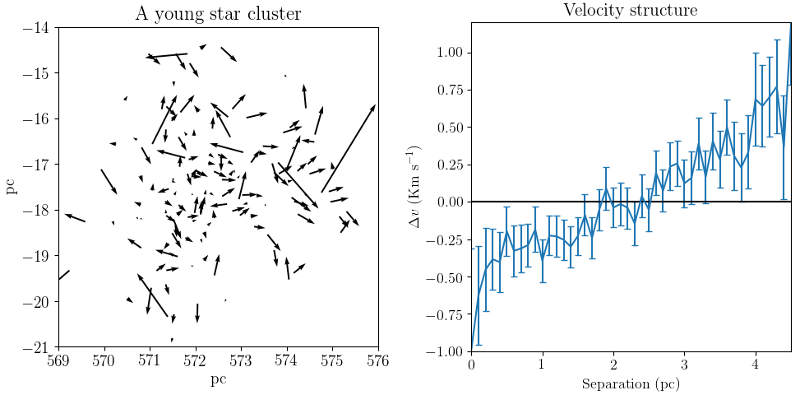| EPoS Contribution |
|
Quantifying Velocity Structure in Star Clusters
Becky Arnold U Sheffield, Sheffield, UK | |
|
Over the years several methods of quantifying spatial substructure in star clusters have been developed. These methods have greatly aided attempts to study the formation and evolution of star clusters in a meaningful, quantitative way. However, at present there are few or no methods for analysing velocity structure in star clusters. This is of particular relevance currently as Gaia will provide us with an unprecedented quantity and quality of velocity data. Here I will present a method for quantifying velocity structure in star clusters.
This method can be applied to data in any number of dimensions. It also makes no assumptions about the cluster's morphology, and does not require a cluster centre or radius to be defined. As a result it can be applied to smooth and substructured regions equally easily. I will also demonstrate that the method is highly robust even when applied to incomplete data or data with large uncertainties. By applying this method spatial and velocity information that is extremely difficult to analyse by eye in a useful, quantitative way (e.g. first panel of the figure) can be converted to an easy to interpret signal which describes the velocity structure of the cluster (second panel of the figure). | |
 | |
| Caption: Left panel: A young star cluster. The position of each star is represented by an arrow, and the direction of the arrow indicates the star's velocity. Right panel: The velocity structure measured from this star cluster. The x axis is the distance between stars, and the y axis is the velocity difference. From this figure we learn that stars which are close together in this cluster have low velocity differences, whereas stars that are far apart have very different velocities. This is logical, as in this young cluster it is unlikely the stars have moved far from where they formed, or that their velocities have changed significantly. It is reasonable that stars that formed near one another (so out of the same patch of gas) would have similar velocities. | |
| Collaborators: S. Goodwin, UoS, UK R. Parker, UoS, UK |
Key publication
Suggested Session: Star formation "laws" and IMF |

